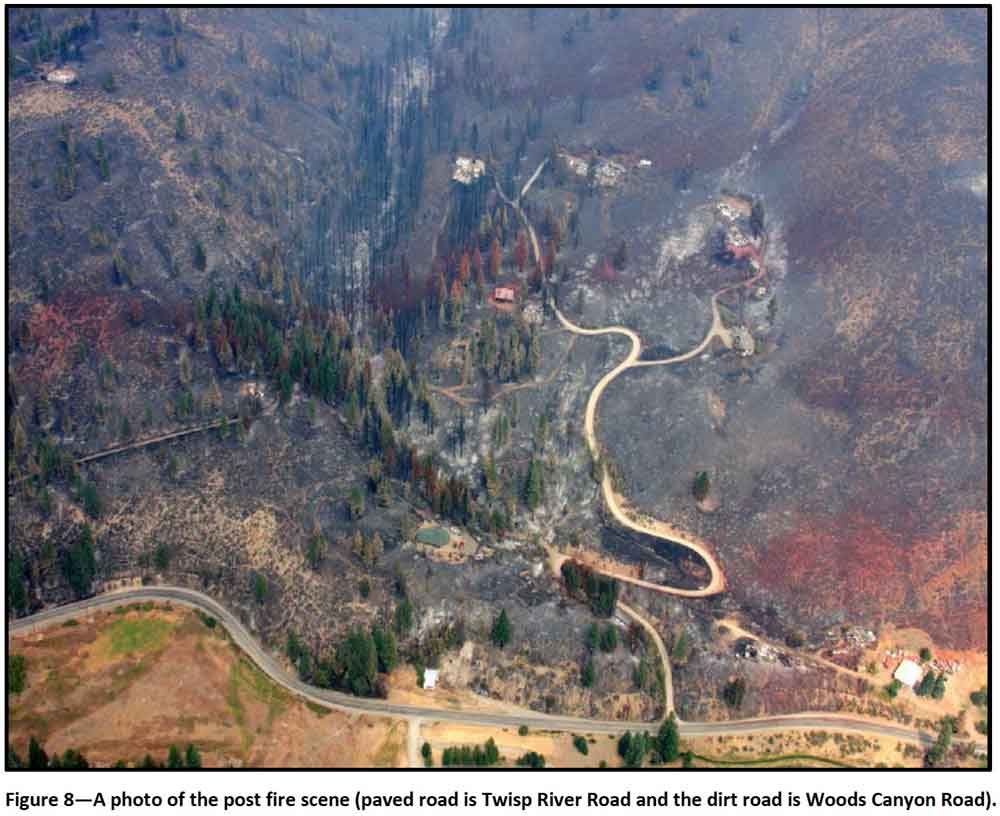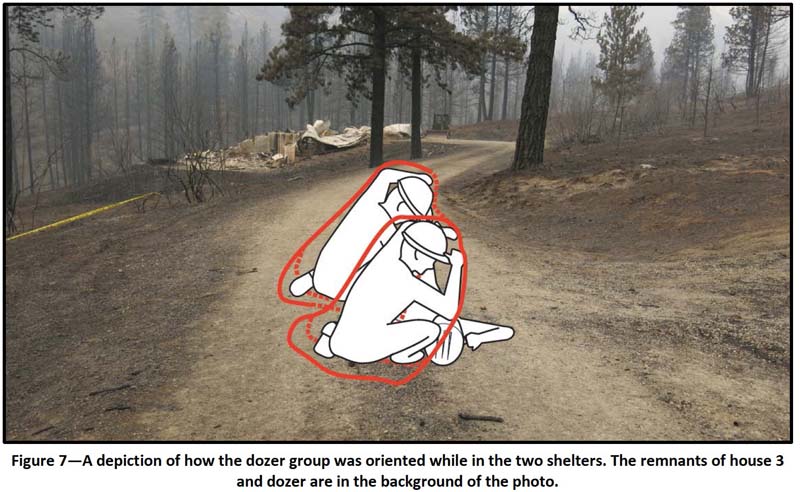On November 18, the day a preliminary report was released for the Twisp River Fire, the firefighter who was severely burned on the incident west of Twisp, Washington left the Harborview Medical Center in Seattle.
Daniel Lyon Jr., 25, one of four people in Engine 642 assigned to the fire on August 19, left the vehicle after it crashed at about 3 p.m. while the crew was trying to drive to a safety zone through a very active part of the fire. He made his way through flames to a road where he was found by another firefighter. The two of them ran down the road until they found an Emergency Medical Technician Paramedic who provided initial treatment before Mr. Lyon was transported by ground ambulance and then a helicopter to the burn unit in Seattle.
The other three firefighters in Engine 642 died in the vehicle, according to the corner’s report, from smoke inhalation and thermal injuries. They were Richard Wheeler, 31; Andrew Zajac, 26; and Tom Zbyszewski, 20. All four were employees of the U.S. Forest Service working on the Okanogan/Wenatchee National Forest out of Twisp, Washington.
After spending three months in the hospital and undergoing 11 surgeries, including several skin grafts, Mr. Lyon still has a long road to recovery ahead of him. He suffered third degree burns over nearly 70 percent of his body. The tips of his fingers had to be amputated because his hands were so badly burned, said Dr. Nicole Gibran, director of the burn center, at a news conference on Wednesday.
In addition to the four firefighters in Engine 642, a three-person dozer crew was entrapped when a wind shift caused the fire to spread in their direction. The extreme fire behavior that resulted, forced all fire personnel on the right flank of the fire to seek safety zones — if they could.
As the fire overtook them, the dozer crew initially parked the dozer near a garage and took refuge between the structure and the tractor. When one of them exited the dozer, he left his shelter, thinking he would not need it. Intense heat drove the three of them inside the garage. After the building began burning, they went outside and huddled under two fire shelters on a dirt road.
Below is an excerpt from the preliminary report, from the section about the engine crew’s accident:
…The right side “point of contact” saw Engine 642 driving up to him, so he whistled and swung his hand over his head, indicating they needed to turn around and get out. The “point of contact” yelled, “RTO! [Reverse tool order!],” meaning that all crews needed to follow their escape route back down the road to the safety zone. Engine 642 turned around in the road and was the first engine to head toward the escape route. One of the other 3 engines turned around at the “Y,” and another engine drove up to house 4 to turn around. The fourth engine remained at house 3.
As Engine 642 drove down toward the safety zone, the road was completely obscured by smoke. The engine jolted and dropped down as if a tire had popped. They kept driving downhill, but they had zero visibility, and the engine went off the road. The engine came to a stop, and the surviving firefighter [Mr. Lyon] got out and was immediately engulfed in flames. He went through the flames and made his way to the road…
The document released on November 18 is called an “Interagency Learning Review Status Report”, one of many stages of the Learning Review process that was adopted by the USFS in 2013. It only includes facts, some of them, that have been developed so far in the investigation. It contains no conclusions or recommendations, and does not place blame. It does, however, present some very general “questions to initiate dialogue” related to protecting structures, the use of Type 3 Incident Commanders on a developing fire, communications (as usual in EVERY report), and the use of fire weather forecasts. The narrative in the report is “abridged”, with the full narrative expected to be part of the final report. Eventually a Safety Action Plan with recommendations will released and made available to the public, according to the preliminary report.
The preliminary report released on November 18 can be downloaded here.
The images above are from the report.



(This is posted for John Barbour who had technical issues attempting to post it himself.)
After digesting the just released Twisp river Fire Fatalities report, (and its California cousin, Valley Fire SART), I would like to make the following observation:
1. In the general population, there exists a cultural bias that is dismissive of weather forecasts. This attitude carries over into the wildland fire community. How many times have you been at a fire station when the dispatcher reads the fire weather forecast and the crew ignores it or even makes dismissive comments about the forecast accuracy?
2. To the credit of the I C`s, they quickly divided the fire into divisions. Why did they call the person a “point of contact” instead the universal recognized DIVS? This is contrary to ICS. A “point of contact” person has no authority and minimal responsibility. I suspect fear of violating 310-1 or agency SOG may have contributed to this. WRONG!
3. Not communications AGAIN! ICS was to have solved this perpetual problem. The hardware and procedures exist, so this must be a human / agency problem.
4. Keeping situational awareness (SA) is difficult on a good day, let alone when conditions are rapidly deteriorating. The term SA is frequently kicked around in the fire service. The fact is that few of us really understand what it means; is a symptom, not a cause.
I hope the crew of E 642 did not die in vain. I trust that the Lessons Learned folks will produce a useful lesson in time to use for next spring`s Refresher training.
John Barbour – retired CALFIRE and active instructor
“Fires commonly burn across different land management and firefighting jurisdictions. – multiple agencies were responsible for managing the fire. – The three different agencies all have slightly different training programs, radio frequencies, and agency cultures. – three different dispatch centers that had dispatched resources to this fire. – Resources arrived on scene with different repeater frequencies loaded in their radios”
These are the issues that need to be adressed, and none of the questions at the end of the report do that. I feel for those IC’s and everyone else dispatched to this fire, even on a low fire day with no lives/values at risk, organizing for this incident would have been challenging.
Totally preventable.
Do not, ever, put your people in that sort of a vulnerable position.
Wrong on so many levels…
I’m just a wee bit curious about the dozer crew’s fire shelter ttaining and why they would sit up in the shelters.
If I remember the report correctly they only had 2 shelters for 3 people. The 3rd shelter had been left in the dozer. The depiction looks like 1 person laying down with the other 2 squatting/kneeling over him holding the shelters to try and protect all 3 of them.
thanks to you bill gabbert for sending out this update on the twisp river fire.